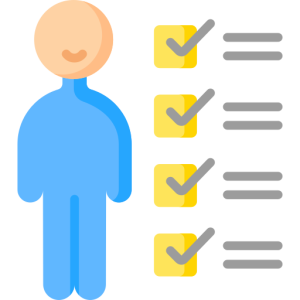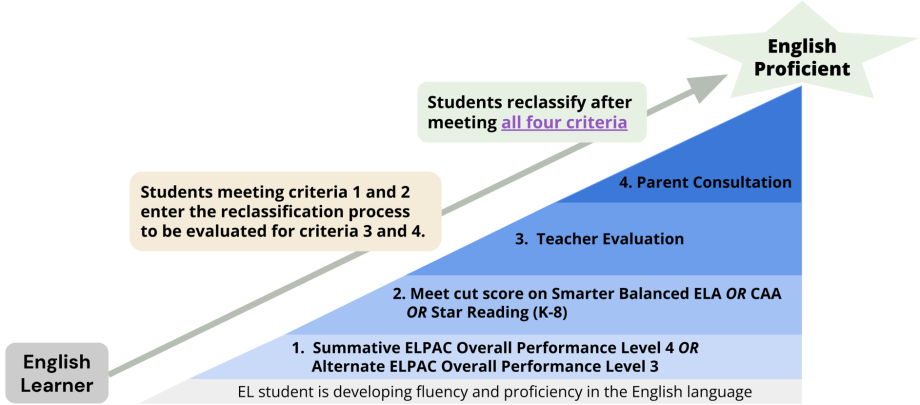What is reclassification? Link to this section
Reclassification is the process of changing a student’s status from English Learner (EL) to Reclassified Fluent English Proficient (RFEP) after they meet state and district criteria for English language proficiency and academic skills.
The San Francisco Unified School District (SFUSD) follows reclassification guidelines established by the California Department of Education (CDE).
To be reclassified in SFUSD, students must meet all four of the following criteria:

- Assessment of English Language Proficiency
Level 4 overall score on the Summative ELPAC (or 3 on the Alternate ELPAC for students with significant cognitive disabilities). - Basic Skills Relative to English Proficient Students
Meet the required cut score on one of the following: Smarter Balanced ELA (SBA) OR California Alternate Assessment (CAA) OR Star Reading - Teacher Evaluation
Teacher confirms the student is performing well in class and ready to reclassify - Parent Opinion and Consultation
What are the requirements for each grade level?
Please refer to the linked SFUSD Reclassification Criteria by Grade Level in multiple languages.
When does reclassification happen?
Reclassification can take place at any time during the academic year, upon the student meeting all the criteria.
SFUSD initiates multiple rounds of reclassification every year.
At the beginning of each round, parents/guardians are notified of their students’ eligibility through ParentVue. For families without ParentVue, a letter is mailed to the home. During each round, teachers evaluate the eligible students and consult with parents regarding reclassification decisions. Students who meet all four criteria for reclassification will have their statuses changed from EL to RFEP (Reclassified to fluent English proficient).

Standard Reclassification Windows:
Round 1: November - December
Round 2: February - April
Round 0 (uses first release of ELPAC scores from Spring 2026): May - June
How does the process work?
Students become eligible to begin the reclassification process after meeting Criteria 1 and 2. The process is completed after Criteria 3 (Teacher Evaluation) and 4 (Parent Consultation) are fulfilled.

For a detailed description, please refer to the process guide.
FAQs about reclassification are addressed below. You are welcome to email reclassification@sfusd.edu with any other questions about reclassification.
What happens after English learner students reclassify?
After students reclassify, they no longer need to participate in designated ELD, annual ELPAC testing, or other English learner services.
The school and Multilingual Pathways Department will monitor RFEP students’ academic progress for four years after reclassification. Interventions and support will be recommended and implemented for RFEP students failing to meet academic achievement goals.

Who can I contact?
Feel free to email your questions to reclassification@sfusd.edu.
This page was last updated on November 27, 2025

